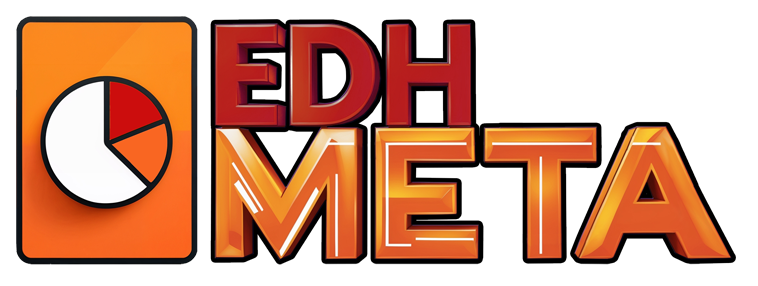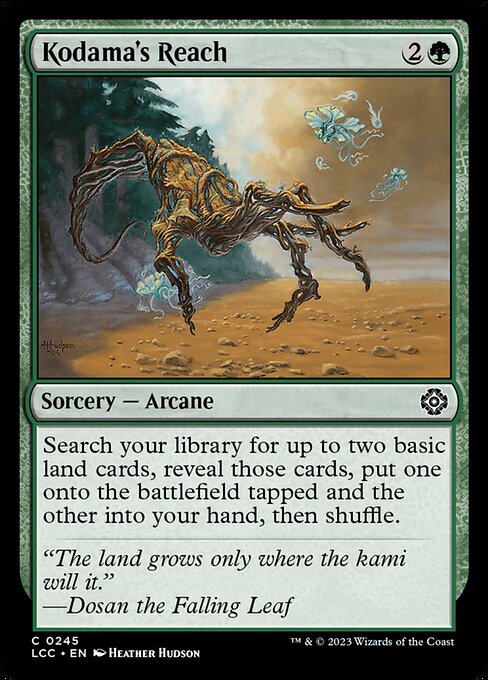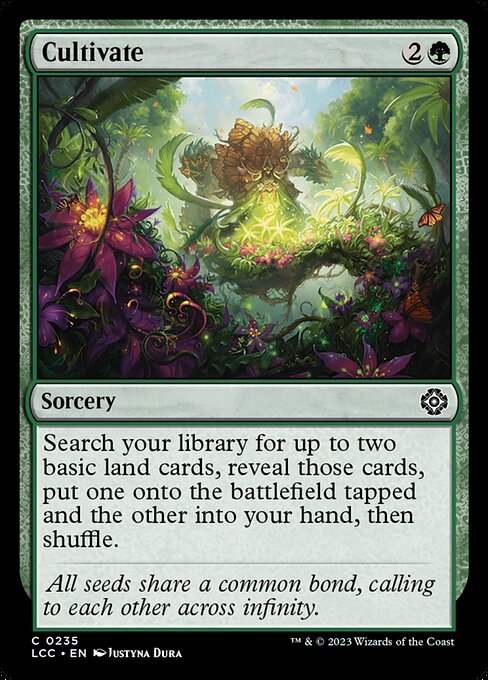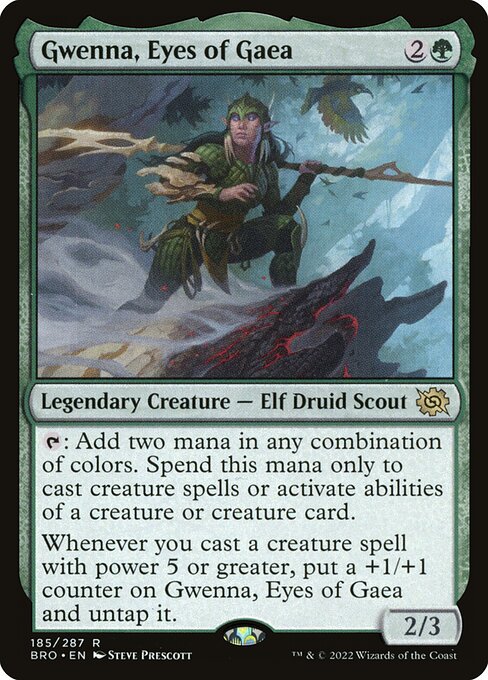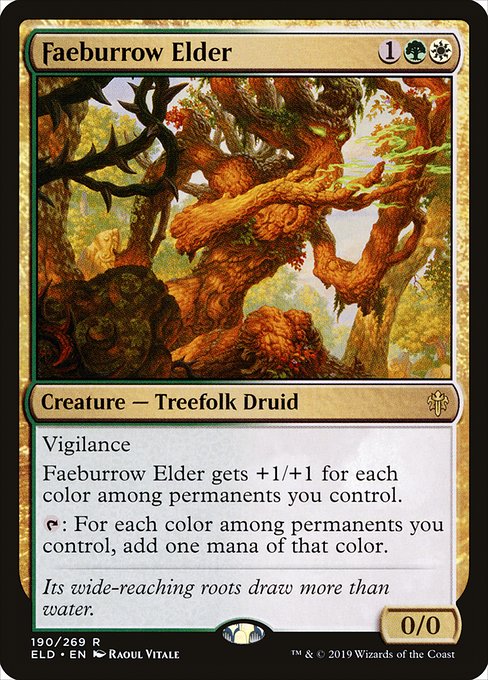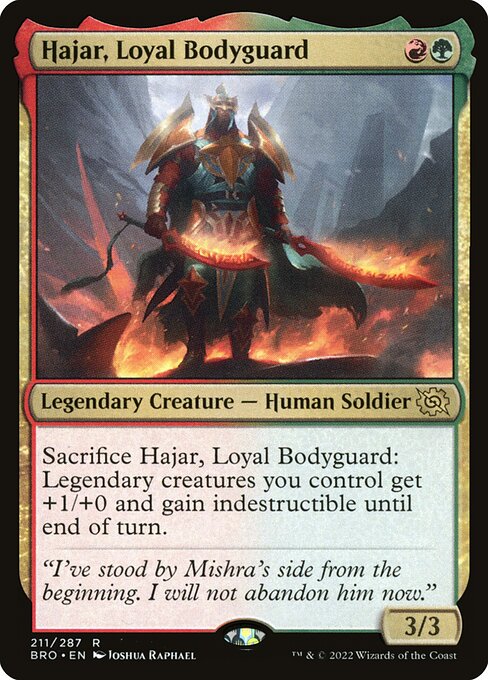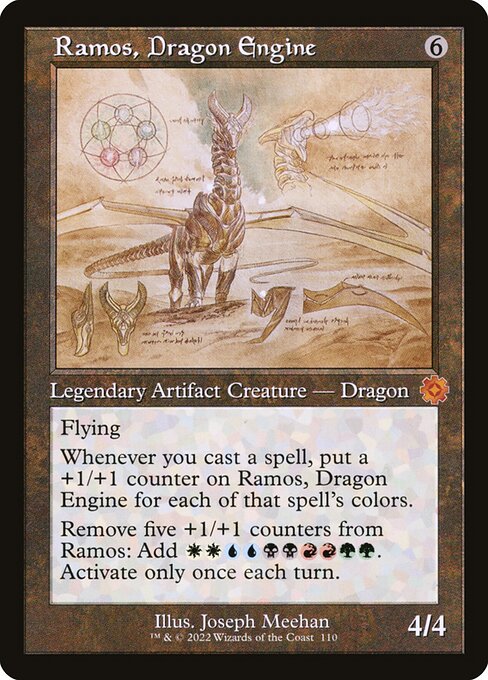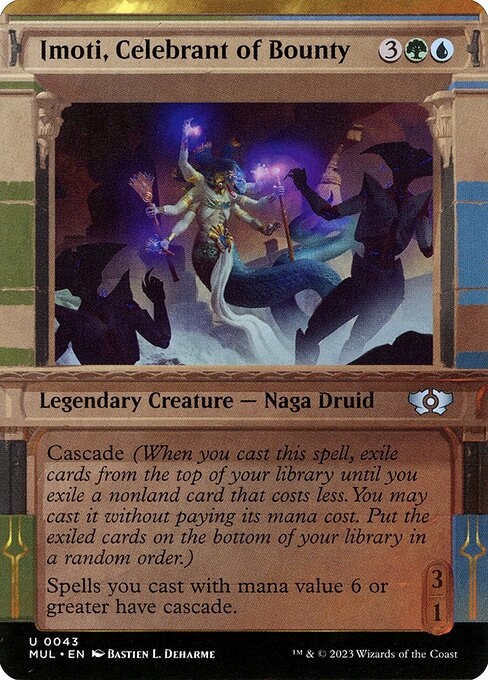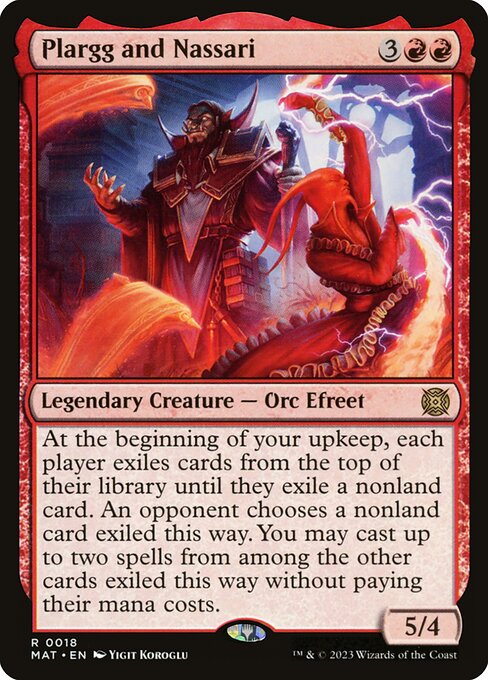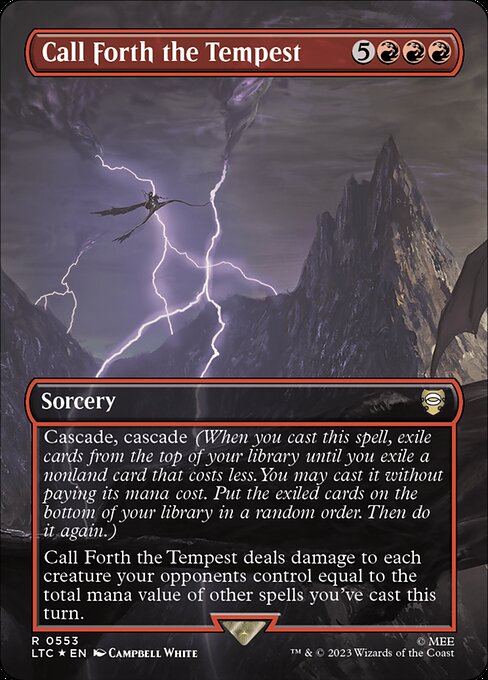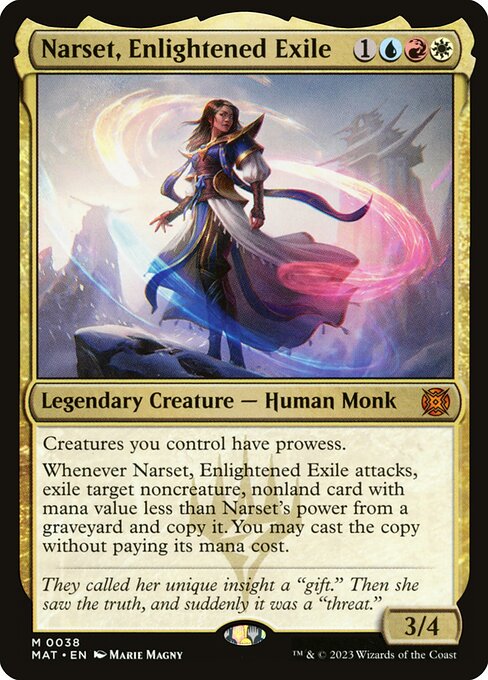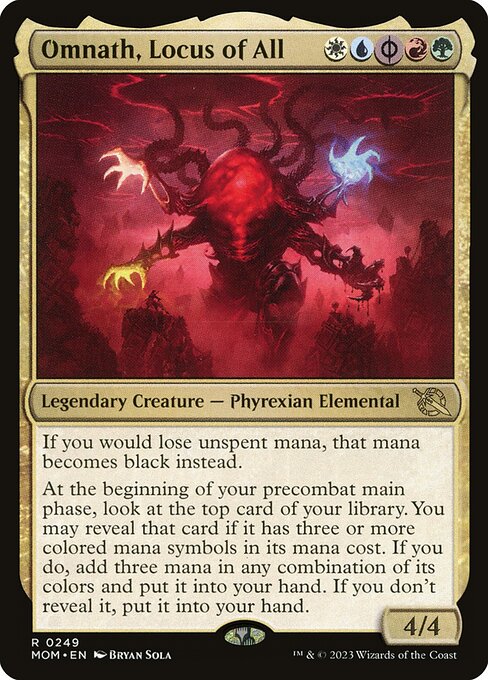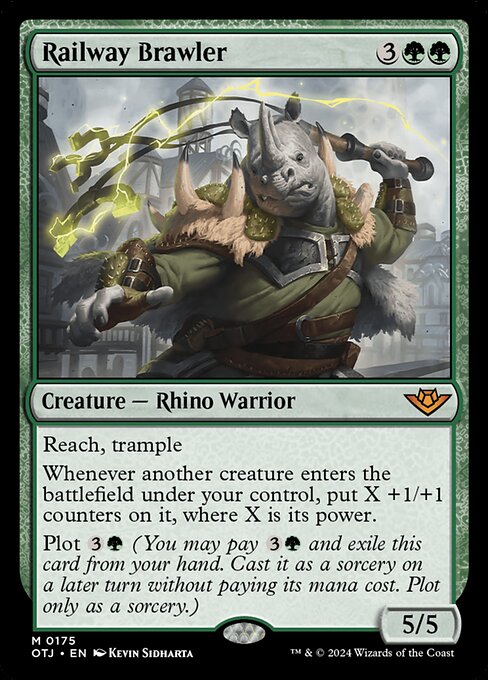When you think of Magic: The Gathering, colors define your strategy; but what happens when you embrace all five? Five-color decks bring a unique flavor of versatility, complexity, and immense raw power. They blend the strengths of all colors, opening the door to endless possibilities that single or dual color decks simply can’t reach.
Commander decks that run all five colors often stand out as particularly complex. There is complexity in trying to make all of it work together, however having a clear gameplan from the start can help you weed off any misleading paths you may be tempted to take when building such decks.
Having access to all 5 colors means you also have access to the best of the best of every color combination.
- Tutors and versatile mana fixing to set up your combos — Demonic Tutor | Mystical Tutor | Chromatic Lantern | Timeless Lotus
- Powerful value creatures — Siege Rhino | Elesh Norn, Grand Cenobite | Aragorn, the Uniter
- Board wipes and control — Ruinous Ultimatum | Wrath of God | Farewell
- Planeswalkers with broad impact — Teferi, Hero of Dominaria | Nicol Bolas, Dragon-God | Liliana, Dreadhorde General
- Game-ending big creatures — Craterhoof Behemoth | End-Raze Forerunners | Maelstrom Wanderer
- Ramp spells — Cultivate |
Kodama’s Reach | Farseek - Group card draw — Howling Mine | Rites of Flourishing
- Political leverage / taxes — Humility | Propaganda | Smothering Tithe
Being a Five-colored deck means the manabase will need more thought to make it function properly. The more colors you add to a deck the more difficult it is to make the manabase work so these decks might have a higher bar when it comes to pricing, since the better lands are also often the more expensive ones.
To guide you through this exciting landscape, let’s explore three distinct archetypes of Five-colored decks, each showcasing different ways to harness the full spectrum of Magic’s power.
1. Beatdown / Stompy
Core Idea: Abuse the power of your commander to turn every Legendary spell on your hand into a pseudo-Cascade to bring even more stuff into the game and beat your opponents with explosive power.
As told, Jodah, the Unifier brings this deck together and makes the sum of its parts way greater, turning every legendary spell into more board presence and pumping your team into a lethal army.
Your main goal should be cultivating your mana generation with ramp spells like
This archetype doesn’t follow a narrow line of play. Instead, it thrives by layering threats and answers until opponents can’t keep up. Creatures like Halana and Alena, Partners and Dragonlord Ojutai provide repeatable advantage, while support legends such as Shalai, Voice of Plenty, Linvala, Shield of Sea Gate and Hajar, Loyal Bodyguard make sure your board sticks around. The anthem effect from Jodah means even utility legends quickly become legitimate attackers, forcing opponents to respect every card you resolve.
Games often end quickly once you assemble a wide board but if that doesn’t work, cards like Ruinous Ultimatum or
The strategy is rather straightforward: ramp, slam legends, attack hard. Obviously you always have to know when to hold back, but 5-color Beatdown usually relies on aggression to keep up the pressure, using size and speed to overwhelm the table before control players can stabilize.
The following decklist puts this gameplan into action, leaning into legendary creatures and combat-focused payoffs to win with overwhelming strength.
2. Cascade / Big Spells
Core Idea: Chain massive spells together until your opponents can’t keep up.
If you like explosive turns where one spell leads to another and then another, this archetype is for you. 5-color Cascade is about using big, splashy effects that cheat mana costs and snowball advantage with every cast. “What is Cascade?” You may ask; it’s a mechanic that let’s you cast one (or more) spells at the back of one original (and usually big) spell.
At the helm we have Ramos, Dragon Engine, a perfect commander for the job. Ramos grows stronger with every multicolor spell you cast, and with enough counters he can generate bursts of mana that let you chain even more big plays. This creates a feedback loop: cast a spell → cascade into more spells → power up Ramos → use that mana to keep the engine going.
The backbone of this archetype is the mechanic it is named after. Cards like Apex Devastator, Maelstrom Wanderer, and Yidris, Maelstrom Wielder are huge on their own and they usually don’t come alone. Imoti, Celebrant of Bounty spreads Cascade to every spell you cast with mana value 6 or greater, ensuring almost every play rolls down into free cards. To top it off, Maelstrom Nexus gives your very first spell each turn Cascade. This gets out of control fast, very fast.
But sometimes Cascade alone isn’t enough; so this particular deck leans into big, cheating effects to keep things flowing. Aminatou's Augury, Plargg and Nassari, and Call Forth the Tempest throw chunks of your library onto the battlefield for free.
Every creature helps. For example Narset, Enlightened Exile which lets you reuse spells for free, Omnath, Locus of All which can give you extra mana or card advantage, and Abaddon the Despoiler which further gives your spells Cascade. Even support cards like Vega, the Watcher and Wild-Magic Sorcerer help ensure that every free cast gives you an extra payoff; you get the point, the engine keeps feeding itself again and again.
The gameplay pattern is straightforwar: ramp early with cards like
Closing the game isn’t hard. You’re already winning by dropping creatures that are simply too big to ignore: Apex Devastator, Progenitus, Railway Brawler, and of course Maelstrom Wanderer with haste-granting power. Backup finishers include synergies like Aggravated Assault for extra combats or Keeper of Secrets turning your Cascaded spells into direct damage. Even when your opponents find answers, your Cascade chains usually leave you so so far ahead in resources that you can rebuild with ease. It’s honestly very, very annoying to play against such deck.
This archetype thrives on unpredictability so neither you nor your opponents will know what to expect, but you all know it’s going to be big. Every turn feels like spinning the wheel, and when the pieces line up, you bury the table with ovewhelming value and board presence. If you want your games to feel like a fireworks finale, Cascade / Big Spells is the archetype for you.
3. Group Hug / Politics
Core Idea: Help everyone at the table while secretly setting yourself up to win.
This deck is all about creating a fun and chaotic game where everyone feels included, but you always have the tools to tip the balance in your favor. At first glance, it looks like you’re just giving away resources with cards like Dictate of Kruphix, Rites of Flourishing, and Font of Mythos. Everyone loves the extra help, so nobody sees you as a threat until it’s too late.
Your commander, Child of Alara, is the perfect hard reset button so if the game gets out of hand, you can send it to the graveyard to wipe the board clean, keeping greedy players in check. That safety net allows you to lean hard into group hug effects like Kwain, Itinerant Meddler, Kami of the Crescent Moon, and Kynaios and Tiro of Meletis, which keep everyone’s hands full and the game moving.
The gameplan on the early game consists about building goodwill and making friends at the table:
- Drop symmetrical effects like Dictate of Karametra or Heartbeat of Spring to give everyone more mana.
- Use Temple Bell, Folio of Fancies, and Walking Archive to keep everyone’s hands full.
- Make deals, cut bargains, and keep attention off yourself.
The mid game is where you start steering the course of the game.
- Leverage political creatures like Gluntch, the Bestower, Selvala, Explorer Returned, and Master of Ceremonies to distribute resources while sneaking ahead.
- Use Tidal Barracuda and Wandering Archaic to subtly control the pace of play, while looking like you’re still helping everyone.
- Drop big table-impacting enchantments like Wild Evocation or Zhur-Taa Ancient to keep tensions and chaos high.
The late game is where you close things out. Some of the win conditions for this particular deck are very sneaky because no one is tracking your every move, others are straight and to the point:
– The sneakiest alternate win con. Easy to hide under all the chaos. Maze’s End – A slow and steady win.- Happily Ever After – A flavorful 5-color victory condition that often surprises the table.
- Door to Nothingness – Instant elimination for one of your opponents.
- Chance Encounter (with Okaun, Eye of Chaos or Zndrsplt, Eye of Wisdom) – A roundabout way to win with coin flips.
And if the table gets too unruly? That’s when Child of Alara steps in to blow everything up, letting you rebuild faster than anyone else thanks to all the extra cards and ramp you’ve been handing out.
Final Thoughts
Five-color Commander decks are the pinnacle of deckbuilding freedom and complexity. They embody the best parts of all colors and strategies, but with that power comes the challenge of mastering mana fixing, card selection, and game flow.
Whether you prefer the adaptable Goodstuff toolbox, the explosive thrill of big spells, the political finesse of Group Hug, or the precise elegance of Combo, five-color decks offer something unique: the chance to wield the full power of Magic in your hands.
Ready to embrace the chaos and beauty of five-color Commander? Pick an archetype, tune your mana base, and get ready to command the full spectrum!
